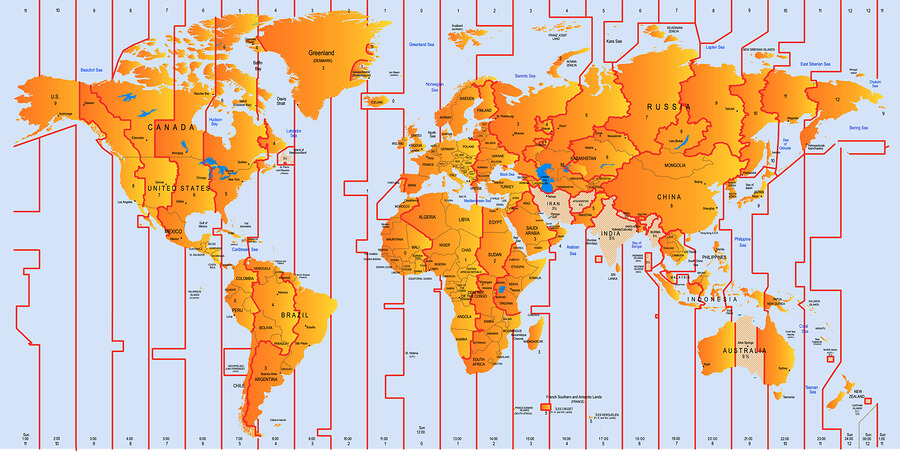GEOGRAPHY FOR FORM 1: TIME ZONES
TIME refers to a period that is used for event or activity. It is measured in seconds, hours, days, months or years.
Time zones is the region having the same standard time. Standard time is common on time for all countries belonging to the same time zone, for example Tanzania, Kenya, Uganda, Ethiopia, Djibouti and Somalia use the same standard time.
This commonly referred to the East African Standard Time. There would be problems of telling time if every place had its own time set according to local mean time. For example, there would be great confusion in railways or airways timetable or in radio programs if they had to show difference time each one place within a small area.
To avoid this problem, different stretches on earth takes their time from great meridian. The time adopted is known as standard time.
In East Africa, standard time is taken from meridian of 45 degree E when a whole stretch of land keeps to the same standard time that stretches from a time zone. Therefore, time zone refers to a stretch of land where standard time is accepted throughout a longitudinal zone of 15 degree width.
Countries with large stretches of land have several standard zones. There are 24 time zones in the world. The Greenwich Meridian is the starting point for dividing the globe into 24 time zones. The standard time for Greenwich is known as Greenwich Mean Time (GMT).
IMPORTANCE OF TIME ZONE
In a certain place there could be a place on the surface using its own local time. This would bring a lot of confusion example every radio station would have to announce different times for every region within the same country; Local time of Mbeya would be different from that of Dodoma. The above confusion was avoided when it was internationally agreed to split the world into 24 time zones according to longitudes.
Each time zone has standard time which is the time of longitude. In the same way, all countries belonging to the same way, all countries belonging to the same time zone have common time.
NB: Large countries like Canada, USA and Russia have different standards for different regions within them because they are crossed by many time zones.
CALCULATION OF TIME
The earth rotates on its own axis from West to East once every twenty four hours. This means 360° of longitude are covered in a period of 24 hours or 1° in four minutes. There are places on a given meridian that experience midday at the same time. Time recorded along the same meridian is known as Local Mean Time (LMT).
Example 1
What is the local time at Morogoro-Tanzania when it is noon at Kigali-Rwanda?
Procedure
- Note the longitudinal position between the two points Kigali 30°E and Morogoro 45°E
- Find the difference in degrees of longitude between Kigali and Morogoro
45 degrees – 30 degrees = 15 degrees
- Multiply the difference by 4 minutes 15°x 4 minutes = 60 minutes; 60 minutes = 1 hour
- The time difference is to be added (+) in case of places to the East of a point. In case of
place to the West, the time difference is subtracted (-). Since Morogoro is to the East of Kigali,
Morogoro time will be ahead of that of Kigali’s by 1 hour, therefore time for Morogoro will be: 12.00 noon + 1 hour = 1.00 pm.
Example 2
When the local time of Accra is 2.00pm, what will be the local time of Bangui 15 degrees E?
Solution
15 degrees – 0 degrees = 15 degrees
15 x 4 minutes = 60
60/60 = 1 hour
Accra 2.00 pm + 1.00 hour time difference = 3.00 pm
INTERNATIONAL DATE LINE.
International date line: Is the line where date change or where the calendar day begins. The one traveling eastward across the date line will gain a day, if one travel westwards and cross the date line, will lose a day.
If Greenwich it is noon at Tuesday, a place 90 degree West would be 10 am on Tuesday, at a place 180 degree it would be midnight Monday. On other hand, a place 90 degree East would be 6:00 pm on Tuesday and at a place 180 degree East would be midnight on Tuesday.
Teacher: Kim Ismail



Comments are closed.